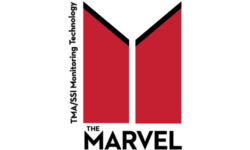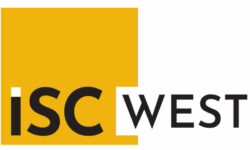How SAGE Integration Is Setting the Stage for Success
Launched in 2020, Ohio-based SAGE Integration believes it is building a better mousetrap to capture more meaningful client partnerships. Company execs explain what that looks like and why customers are responding to its holistic approach.

Shown is SAGE’s leadership team (l-r): Rod Bragg, V.P. of operations; Markus Leghart, controller; COO John Nemerofsky; CEO Eric Frasier; V.P. Jim Geyer; Lori Hudnall, director of HR; and Rick Leighton, V.P. of sales. (Photo by Karl L. Moore)
When you talk about a repeatable model, we’ve seen it on the residential side with mass marketers. That’s more challenging in the commercial space. How do you deploy a uniform approach but still deliver tailored solutions to the end user?
Frasier: We try to be disciplined in having fewer customers. I would rather have 15 great new customers than 100 just for numbers sake. We want to be very selective who we work with. Half our employees are embedded. This is overused, but we are true partners with our customer base. I’ll never forget when I was going through this process, somebody said, “We have over 2,000 customers.” I said, “Do you think I want to know that I’m 2,001?”
That doesn’t make me feel good. In being selective who you work with, you tend to focus a little bit more on the process to remain customizable versus being cookie-cutter. We’re wired to be that partner that has an embedded employee who knows more about that organization than the customer themselves probably does. We’re an extension of the customer.
Nemerofsky: One of the things we feel makes us a little different is with these embedded clients that we have, it helps us innovate and bring them new technologies to solve problems. When we get embedded in a client, we get to understand both their security and business operations. Recommending innovative technology makes it a lot easier for everybody because they know we understand their program and what could help.
One of our differentiators is that we train our people to work on deter versus detect. What does that mean? Our competitors are selling gunshot detection, we’re selling weapons detection. We want to know before that gun or knife gets in the facility, not that you’re firing a gun inside our client’s facility. We sell full-height turnstile revolvers. Our competitors are selling half-way turnstiles. That doesn’t prevent piggybacking, that detects piggybacking. We talk to our clients about duty of care. If you’re protecting one facility this way, you really have a duty of care to your employees to protect all your facilities in the same manner.
Things like that help us innovate, whether it’s keeping our clients on the cutting edge and upgrading their access to protect them from cyber threats or innovation around gunshot detection, anti-drone detection. Innovation is how we’re trying to help our clients protect their facilities and people. Then to install those, obviously, leads us into the operational excellence piece of it.
Little did anyone know that as you were ramping up to launch the business in early 2020, a dark pandemic cloud was looming. How did you adapt to that and how did it alter the rollout?
Frasier: We started the massive undertaking of rebranding SAGE in 4Q 2019. Our goal was to roll out at ISC West. I was in California on a Sunday night and set to leave Monday when they announced Las Vegas was shutting down. We adapted. We didn’t stop the rebranding by any means; we became a virtual company literally overnight with our employee base. We rolled SAGE out virtually. As Mike Tyson has said, “Everybody has a plan till they get punched in the mouth.” I’m an optimist and what happened in 2020 presented us with an awesome opportunity to test our business model in the most unique time. You get punched in the mouth and guess what? You get a chance to test your plan pretty quick.
Nemerofsky: As a leadership team, we were virtual for a period of time but our field personnel were essential, especially our embedded employees. We hired 12 new employees and didn’t let go of any, due to the increasing workload from existing clients. If we had everybody working together and one person became ill or had symptoms, we’d have to quarantine the whole team. So we broke our teams into A and B, kept them working separately. They worked through the whole process, it created some challenges. We had shipping, receiving popping in at specific times to meet UPS and FedEx to keep the product rolling through the warehouse and to keep everything going.
How has the pandemic changed the technology picture for your customer base?
Nemerofsky: Our clients made shifts in March and April of 2020 and right through now on back-to-work strategies. Mobile credentialing in volumes we’ve never seen before. We’ve had clients order 20,000 mobile credentials from us with the idea that when their employees come back to work they won’t have to touch a card or a reader. They’ll hold their phone a couple of feet away from the reader and that’ll be their entry. We’ve seen more deployments of facial recognition than we have ever had in any biometrics during my history in the business. We’ve seen a lot of deployments for frictionless entry, more automatic doors tied to our systems.
Then we’ve got temperature testing and mask detection. If you’re not wearing a mask you can’t get in. We’ve started to see more contact tracing in our systems get rolled out. If your temperature came up high that day and the system does let you into the door, now we’re tracing you because your temperature was 102⁰ when you were at work. Those technology areas wouldn’t have been talked about if the pandemic didn’t happen. There are a lot of return-to-work type challenges and new partners, new technology, new training and new interaction with the customer of how they’re going to use these tools.
What other technologies you are really excited about and the services they can bring?
Nemerofsky: We’ve had a lot of clients asking for managed remote video, not hosted. What does managed mean? If I see an incident or it’s tied to an alarm, I’m interactive with you. I can tell you, “Hey, you’ve got somebody breaking into a car in your parking lot. You need to dispatch security.” It’s a great alternative for the company that doesn’t want to man a GSOC 24/7. Maybe they want to do it Monday to Friday, 8 to 5, and those other shifts go to our outsource, whether it’s Netwatch or RAS Watch or somebody like that, that we’ve partnered with.
Then with Dedrone, we’ve had clients, our nuclear clients, and our regulated utilities are very interested in anti-drone technology, which comes to us in a hosted format for more RMR. Our overall recurring revenue goal is 20% of total revenue, whether that is embedded technicians, service contracts, hosted video, hosted access, hosting facial recognition, mobile credentials, a lot of the hosted cyber programs.
We’ve got good initiatives to roll everything out to give Cloud opportunities to our clients to solve problems. For so long access control and video have been about running reports. How many door props did I have? How many doors forced open? How many access denials? The industry is getting smarter with looking at trending and dashboarding around that to ascertain the larger effects. Those are some of the new things we see for 2021 and beyond.
Going back to a cybersecurity, to what extent do you see as it as a revenue opportunity as opposed to table stakes threat mitigation?
Nemerofsky: For us it’s about bringing awareness to vulnerabilities, whether it’s cameras and changing default passwords. Whether it’s making sure the NVR is running the right version, talking to them about protocols like OSDP, and the importance of insider threat. You can’t just upgrade your card and credential, you need to upgrade the intelligent controller as well. In the senior living space and property management, for example, where there’s no IT director, we’re their cyber resource because we’re putting systems on their network. If we don’t do it the right way, they become vulnerable. Some customers are built to have Cloud solutions and that’s where we find cyber coming into play.
For large corporate or Fortune 100 type clients, it’s more about awareness as we deploy systems, different BMS systems, sharing hardening guides from the manufacturer with the IT and cyber teams. We’ve been part of a lot of red team drills in Fortune 100 companies where they’ve tested our systems to make sure they’re cyber bulletproof. That’s our involvement today, and there are more and more conversations around that every day.
Frasier: Obviously, cybersecurity is on everybody’s mind but we first go to ourselves and look inward. What are we doing to protect our customers from our vulnerability? Because we’re a big entry point. We’re tertiary or secondary around the customer. I was surprised at some of the integrators we looked at to purchase how little, if any, they’ve done to really protect themselves as an entry point for their customers.
We’ve really looked at that and hired a cyber specialist company led by the White House’s former CIO. If you look at percentages spent on that versus overall budget, it’s a massive spend for us. But I never want to look my customer in the eye and know I was the reason there were vulnerabilities within their system.
If you enjoyed this article and want to receive more valuable industry content like this, click here to sign up for our FREE digital newsletters!

Security Is Our Business, Too
For professionals who recommend, buy and install all types of electronic security equipment, a free subscription to Commercial Integrator + Security Sales & Integration is like having a consultant on call. You’ll find an ideal balance of technology and business coverage, with installation tips and techniques for products and updates on how to add to your bottom line.
A FREE subscription to the top resource for security and integration industry will prove to be invaluable.














